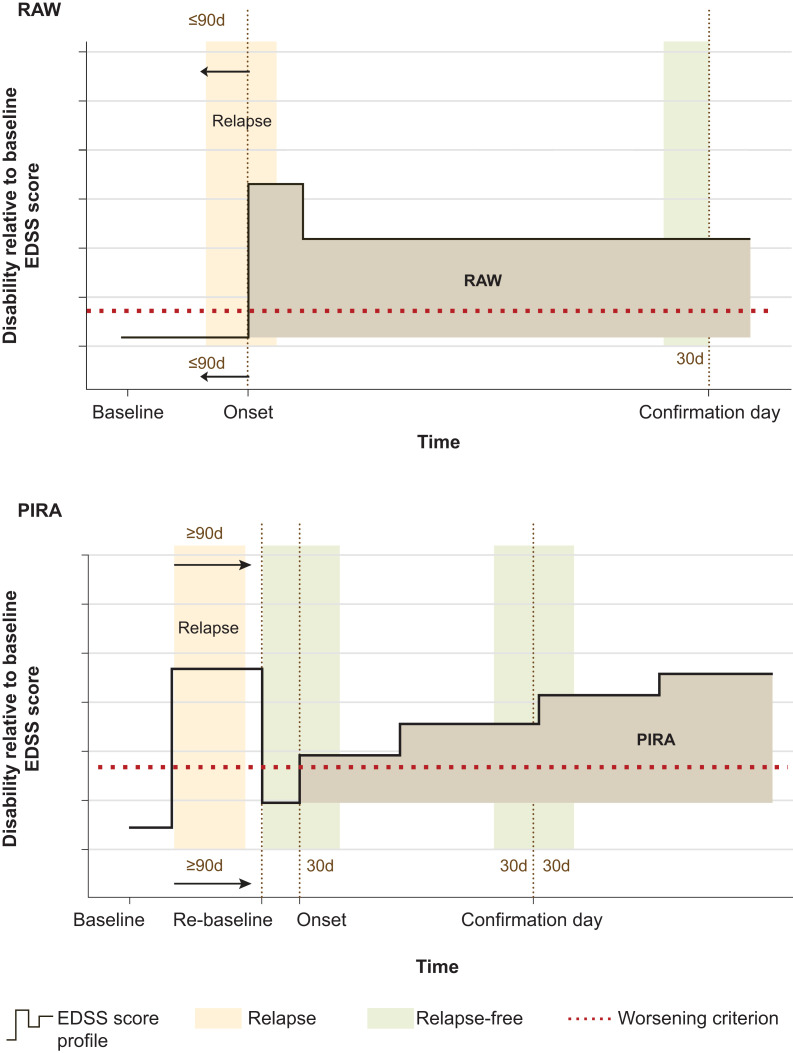Figure 1.
Schematic representations of RAW and PIRA event definitions. The EDSS-worsening threshold relative to baseline (or the ‘re-baseline’) is shown as a horizontal red dotted line; a disability event is defined by a clinically meaningful increase of the EDSS above the threshold, sustained until and confirmed by an EDSS assessment at least 3 or 6 months apart from the onset of the worsening. The bold black line represents the patient’s longitudinal disability trajectory (EDSS scores collected at visits). The onset and the confirmation are shown with vertical dotted brown lines. The vertical shaded area to the left in both schematics (peach) represents a relapse. The other vertical shaded areas (green) must be relapse free to fulfill the definition of RAW or PIRA, consistent with the definition in Kappos et al.1 In case a RAW or PIRA event could not be confirmed due to the occurrence of a relapse in the green interval, the confirmation was delayed to the next EDSS assessment. The onset of a RAW event has to occur ≤90 days since the start date of the most recent relapse. For PIRA events, the onset has to occur at >90 days from the onset of the most recent relapse. For PIRA events, if a relapse with incomplete recovery occurs, the baseline (i.e. the EDSS reference value) is reset >90 days after the relapse onset (‘re-baseline’; shown with vertical dotted line). The PIRA event is then relative to this new baseline. d = day.

